The Elaborate Case for Where the Best Birds in the World Live

A view of a beach on an island in New Caledonia. (Photo: By my LifeShow, CC BY 2.0)
Ornithologists are very helpful in helping the public understand birds. These scientists have taught us how they behave, what they eat, how they think, how they communicate, how they’ve evolved, how they fit into our ecosystems as a whole, and what needs to be done to save them from such scourges as the domestic cat.
But one major flaw in the thinking of ornithologists is that they typically do not engage in debate about which bird is best or where to find the best birds. This is where Atlas Obscura can help: Species for species, the French territory of New Caledonia, in the South Pacific, has the world’s best birds.
To crown the area with the best birds, first, we have to decide our criteria for what “the best birds” even are. First up: there must be several interesting bird species that occur nowhere else on Earth. Second: To be a “good” bird, a bird must have something superlative. It could be very large or very small, very bright, very loud, very smart, very weird, very cute, or very threatening. No matter how you get there, there must be something about it that makes you say—“hmm, good bird.”
New Caledonia is a series of dozens of islands, many of which have no permanent population, in the Pacific Ocean, over 600 miles east of Australia. In land area, the territory, which at some point in the next three years will vote on whether to become independent of France, is just a bit smaller than New Jersey. (It’s unlikely to become independent just yet, given the preferences of its elected officials.) Yet in terms of biodiversity, New Caledonia is a giant among giants—it’s commonly referred to as a “hotspot,” boasting an obscene number of plant and animal species found nowhere else on Earth.
That’s largely due to its particular geologic history. Our best guess is that the islands that make up the territory, along with New Zealand, separated from Australia somewhere around 80 million years ago, and that they further separated from New Zealand, according to some recent studies, as long as 37 million years ago. There are only a few islands on the planet that have been isolated from a continent for that long, and perhaps only Madagascar can equal New Caledonia in terms of the strange forms evolution took in isolation.
Without the ability to cross the substantial waterway between New Caledonia and Australia, the species that found themselves on these islands multiplied and evolved to take advantage of every conceivable ecological niche. Some animals grew absurdly large; the New Caledonia Giant Gecko is the largest gecko the world, known for the strange growling noises it makes while perched in trees. Many species known as “living fossils,” like the nautilus, make their homes in the New Caledonia Barrier Reef, the second-largest barrier reef in the world. Dugongs, which look like a cross between a manatee and a vacuum cleaner, patrol the shallow waters around many islands. Giant clams, which can grow to weigh over 200 pounds, thrive there. New species are regularly discovered and the World Wildlife Fund classifies the area as under-studied. New Caledonia is basically Jurassic Park.
What does this mean for the birds, though? There are no native land mammals in New Caledonia (though there are a few bat species and several marine mammals, like seals, in the rich surrounding seas). Without mammals, many bird populations evolved to take advantage of particular food sources and habitats, which means that there are many birds in New Caledonia that are unlike any other birds anywhere else in the world. Here are some reasons that this island chain’s birds are the best:

The New Caldedonian Crow: wicked smart. (Photo: Catalogue of the Birds in the British Museum Volume 3/Wikimedia)
The Smartest Crow in the Room
The New Caledonian Crow does not look particularly unusual; it’s a medium-sized, all-black crow. It’s a bit smaller than the American Crow, though you’d be forgiven for confusing the two species upon first glance. What makes it so impressive, and such a strong argument for New Caledonia as the territory with the world’s best birds, is in its behavior.
This crow is widely accepted to be one of the most intelligent birds on Earth. Both in the wild and in captivity, this crow has proved capable of using as well as creating its own tools, and studies in laboratory environments have found that the crow is able to solve complex cognitive puzzles using tools. Very rare for any animal, it can make tools out of materials it’s never seen before and would likely never see in the wild, like bending metal wire into shapes to retrieve food, and it’s also capable of using tools to retrieve other tools.
This makes the New Caledonian Crow the only non-primate species able to create new tools or new uses for tools and teach them to its peers. Suck it, parrots.
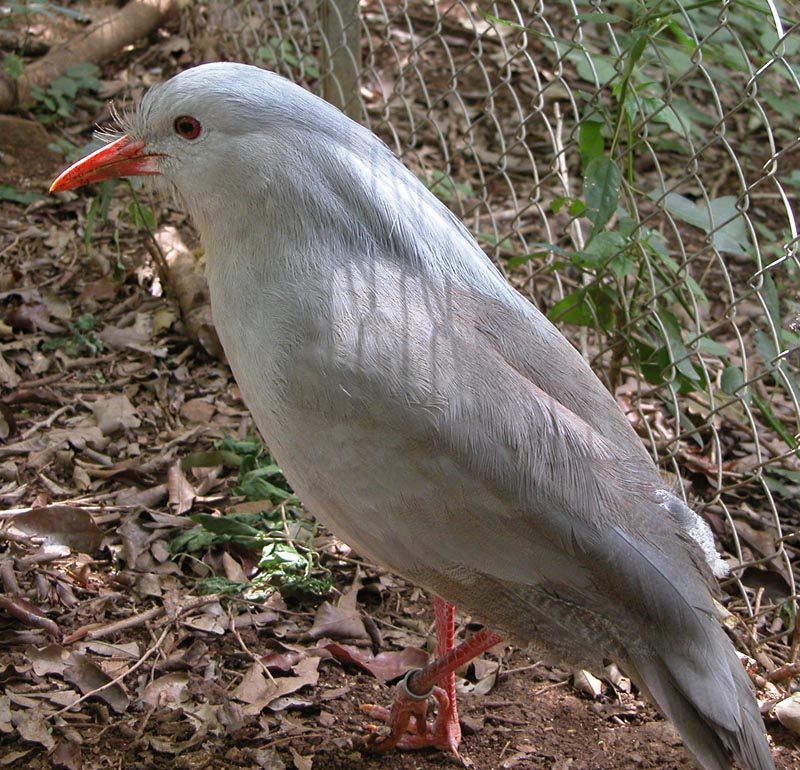
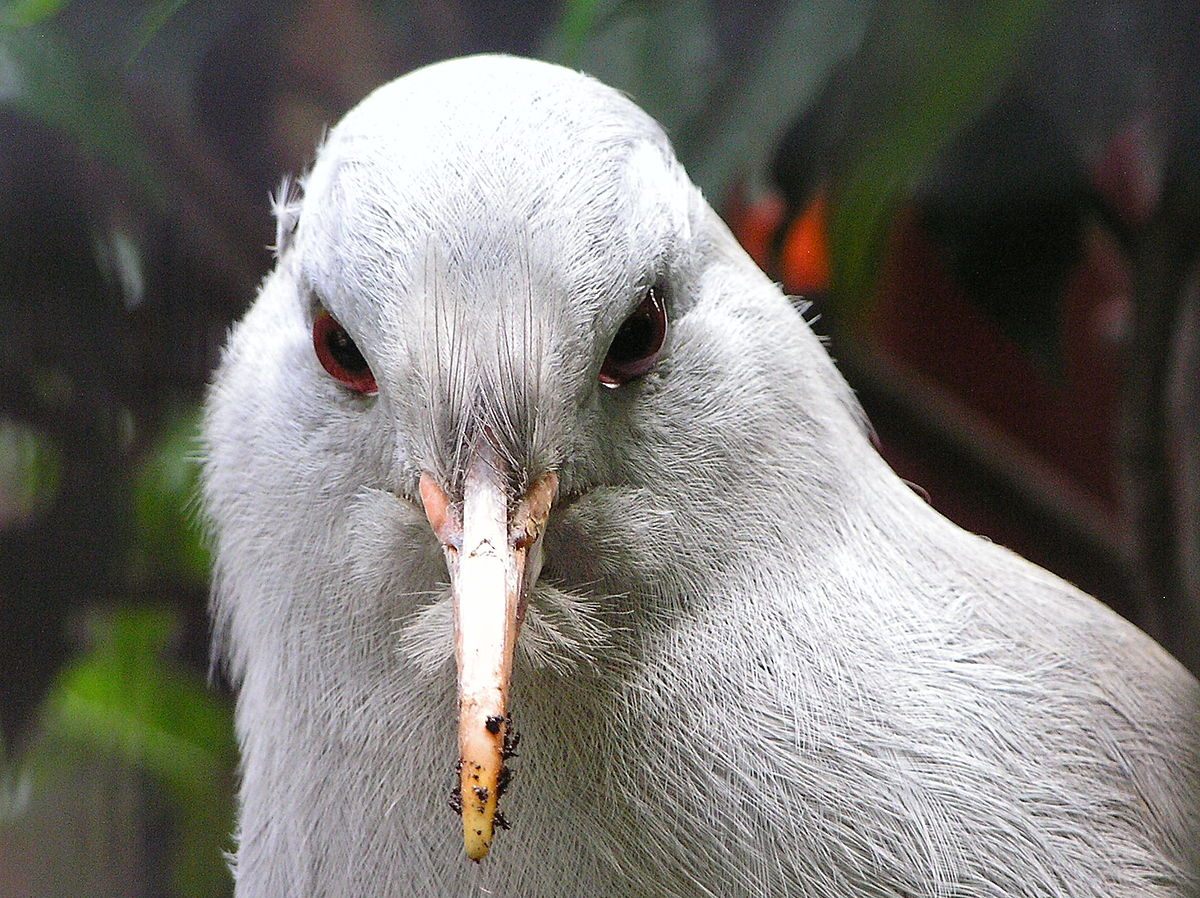
Top: The Kagu. (Photo: By Scott Meyer). Above: The Kagu is the only bird with a membrane covering its nostrils (Photo: By Frank Wouters, CC BY 2.0)
An Adorable Flightless Bird
The Kagu is one of those birds that figured out an ecological niche that would have normally been taken by mammals, and exploited it. Long-legged and nearly flightless, the Kagu rarely leaves the ground, and spends most of its time rooting around under leaf cover for insects and reptiles to eat. It lives only on Grande Terre, the largest island in New Caledonia, where it frequently delights photographers by raising its head feathers and looking surprised.
The Kagu is a very ancient bird and has resisted attempts to find any close relatives. It’s the only member of both its genus and its family, and though it’s generally grouped in with crane-like birds like the Sunbittern of South America, it has no close relatives still alive.
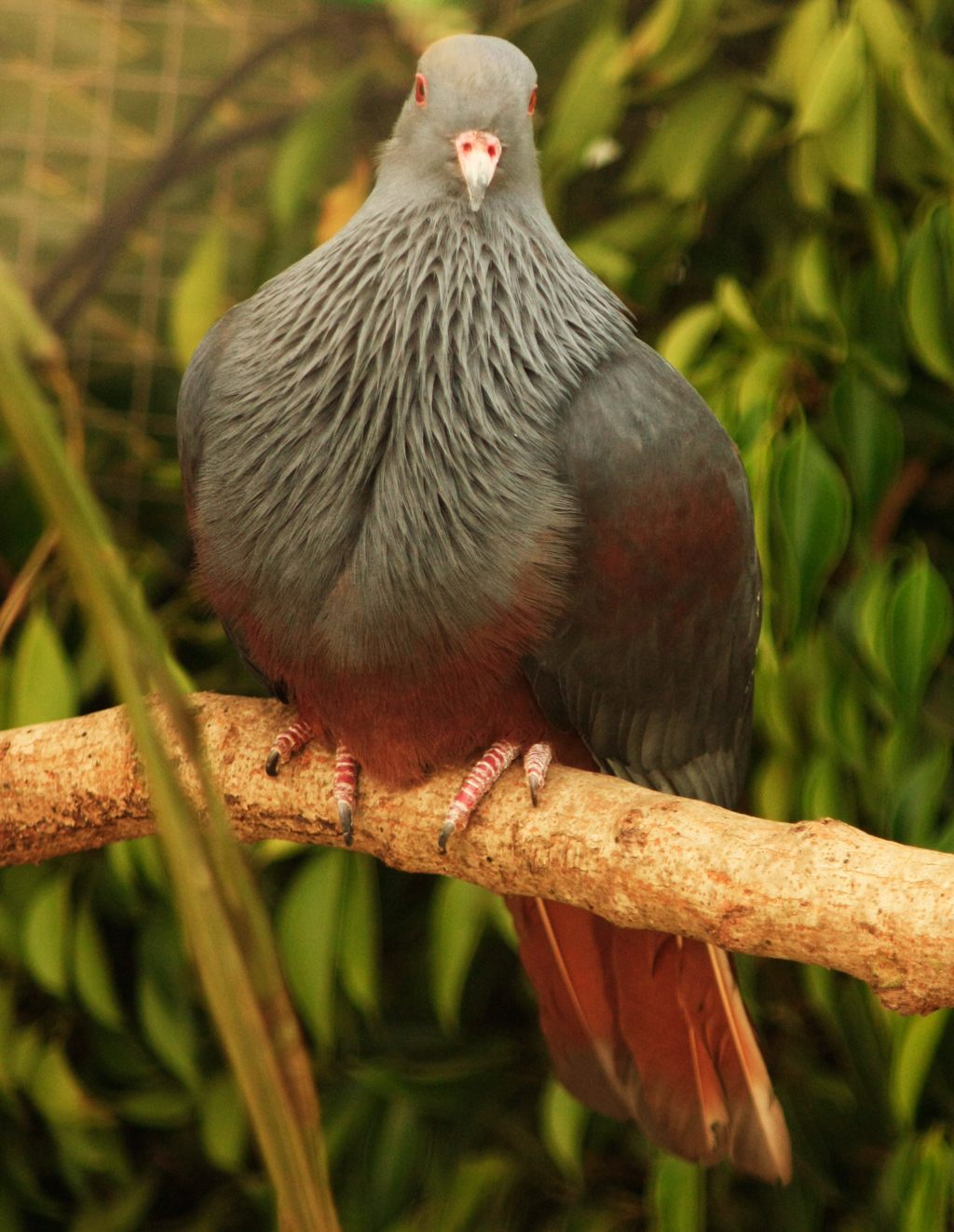
Great pigeon, the Goliath Imperial Pigeon. (Photo: By Jean Ravau et Léa Hatteschweiler, CC BY-SA 3.0)
Excellent Pigeons
The pigeon and dove family is perhaps the most underrated of all the bird families; even our own domestic pigeon (and the feral populations thereof) has its charms. But in the South Pacific, the pigeon family is not just widespread, but beautiful, with spectacular plumage. In New Caledonia, there are two notable species of endemic pigeon: the Goliath Imperial Pigeon, which is one of the largest in the world, and the Cloven-Feathered Dove, a lovely green-and-yellow bird with nice neat bands.

An uncommon sparrow, the Green-Backed White Eye. (Photo: By Papier K, CC BY-SA 3.0)
Even the Little Common Birds Are Cool
One of the more common endemic species in New Caledonia is the Green-Backed White-Eye, the size of a house sparrow and about as frequently seen. But look how cool this little bird is! Most white-eye species are dull, but this particular species, often found in large flocks searching for papaya to eat, is unusually vibrant, with a ring of tiny white feathers around its eyes.
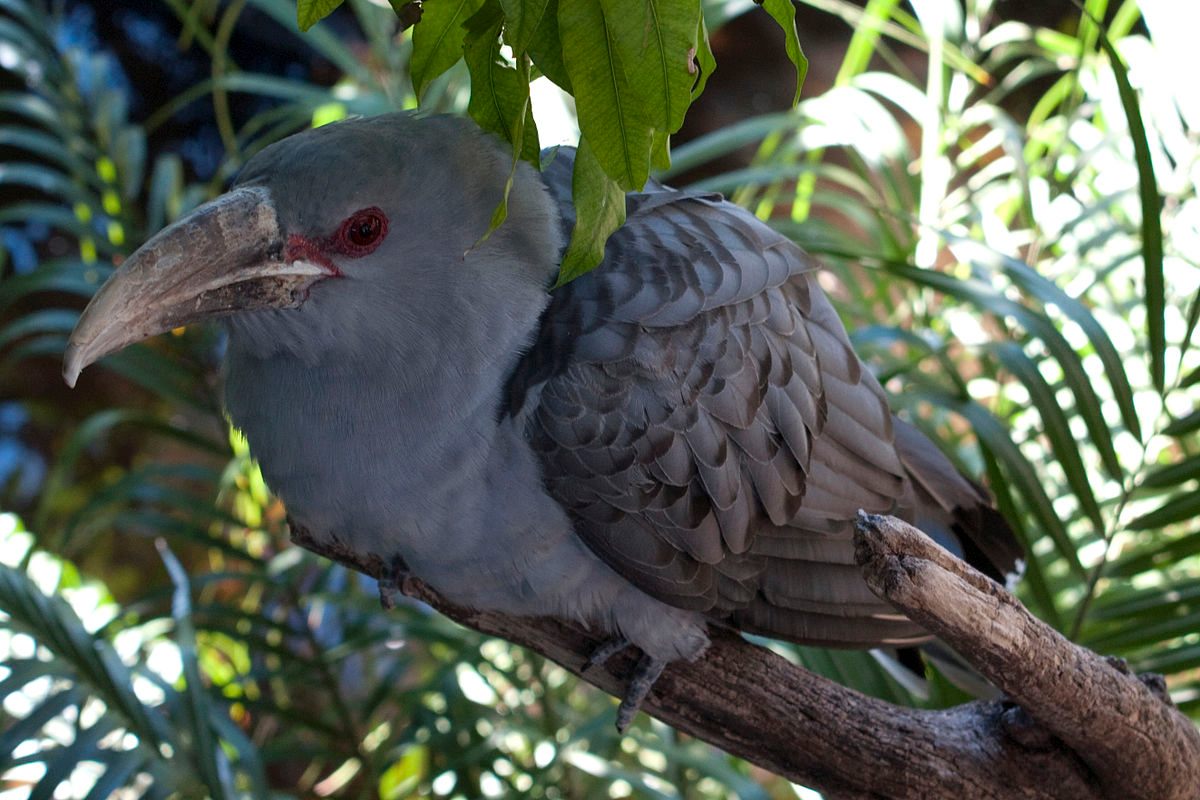
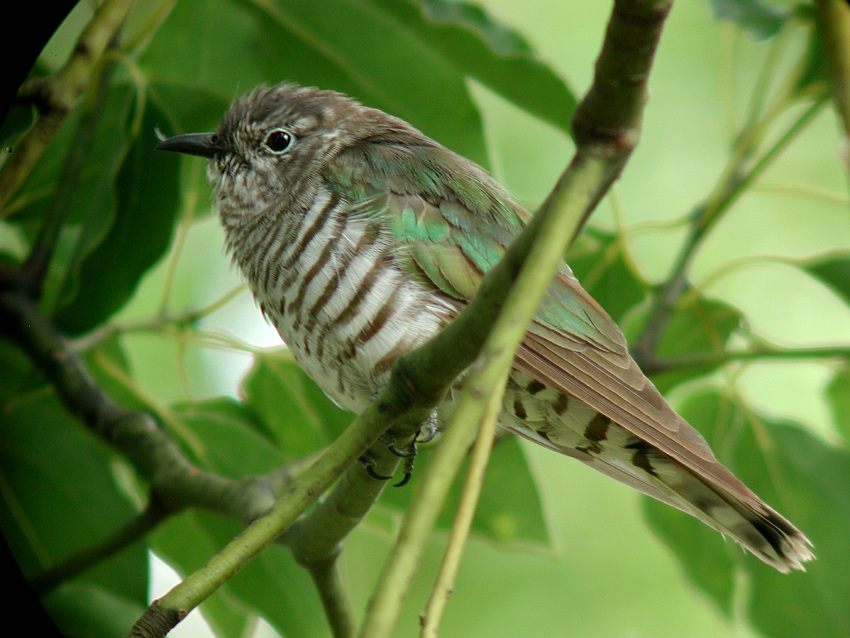
Top: The largest parasite of its kind: the Channel-Billed Cuckoo. (Photo: By Bilby, CC BY 3.0.) Above: The Shining Bronze Cuckoo (Photo: By Aviceda, CC BY-SA 3.0)
Shitty But Interesting Parasitic Birds
New Caledonia is home (for at least part of the year) to several parasitic bird species. They’re not parasitic of people; instead the birds lay their eggs in the nests of other birds, which incubate the parasite’s eggs until hatching. After hatching, some of these birds, like the Shining Bronze Cuckoo, the smallest cuckoo in the world, will murder all the other birds in the nest. Others, like the Channel-Billed Cuckoo, the largest cuckoo (and largest brood parasite) in the world, will simply outmuscle its unrelated nestmates for food, ensuring that they don’t survive.


Top: New Caldedonian Parakeet (Photo: Proceedings of the Zoological Society of London 1882) Above: The Horned Parakeet (Photo: By TP ONG, CC BY-SA 3.0)
Great Parrots
Heavily forested, tropical islands usually bring to mind one thing in the bird world: brightly colored parrots. New Caledonia has some excellent ones; among others, the Horned Parakeet boasts an unusual black-feathered face and two sinister-looking head feathers that give it its name, and the New Caledonian Parakeet likes to hang out in groups and eat mussels, much like humans.
There are also lots of visitors to New Caledonia, birds that may also be spotted in Australia or New Zealand or other islands in the South Pacific but that are commonly found within the French territory. Some of these are very very good birds.

The small falcon, the Nankeen Kestrel (Photo: By Jim Bendon, CC BY-SA 2.0)
Very Big Raptors and Very Small Raptors
A key argument for the avian supremacy of any given place is its birds of prey, and a further distinction should be given to those places which boast both a very large and scary raptor and a tiny and adorable raptor. New Caledonia has this distinction. The White-Bellied Sea Eagle, an enormous bird that likes to fly upside-down underneath other birds and grab them while screaming like some kind of Greek nightmare, is sometimes seen in New Caledonia. Same with the Nankeen Kestrel, a very very tiny species of falcon that makes occasional trips to the islands.
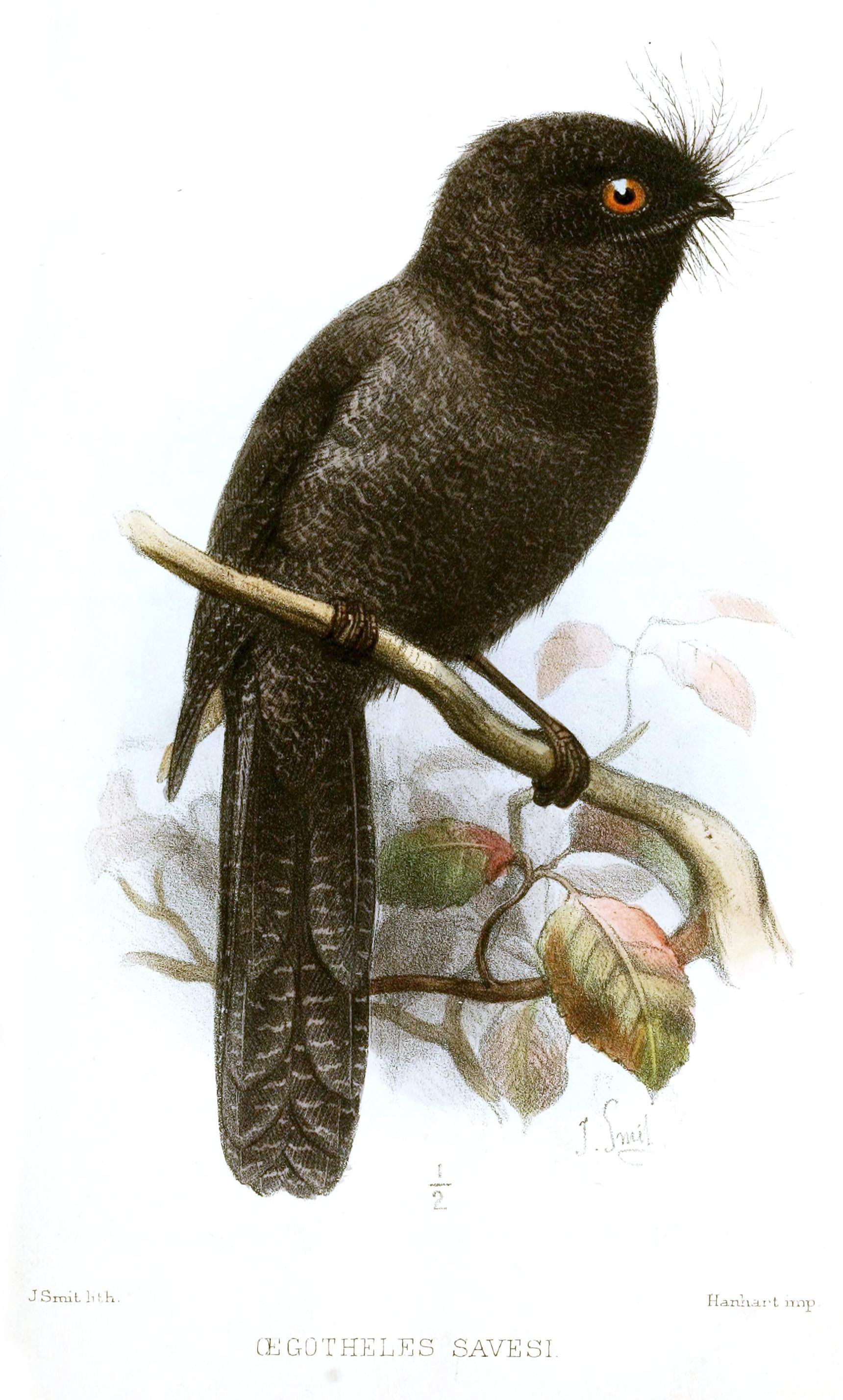
Aptly-named Enigmatic Owlet-Nightjar. (Photo: By Joseph Smit)
Ah, A Mystery
Because New Caledonia is not really adequately studied, there are lots of bird species whose continued existence is unknown. One of these is the Enigmatic Owlet-Nightjar, an extraordinarily strange bird that was last seen, maybe, we think, in 1998. Owlet-nightjars are very confusing birds; they look quite a bit like the nightjars, a family of birds that includes the Whip-Poor-Whills of North America, which in turn look (and act) like weird alien owls. Like the nightjars, the owlet-nightjars have flattened heads and very short but wide beaks which open improbably and scarily wide, and are mostly carnivorous.
But the owlet-nightjars are different enough from regular nightjars in their DNA to be classified as their own order, and every species that has yet been placed in the owlet-nightjar order lives in Australasia. Close analysis of their skull shapes finds that they might well be recently evolved from…wait for it…the hummingbird family. What the hell.

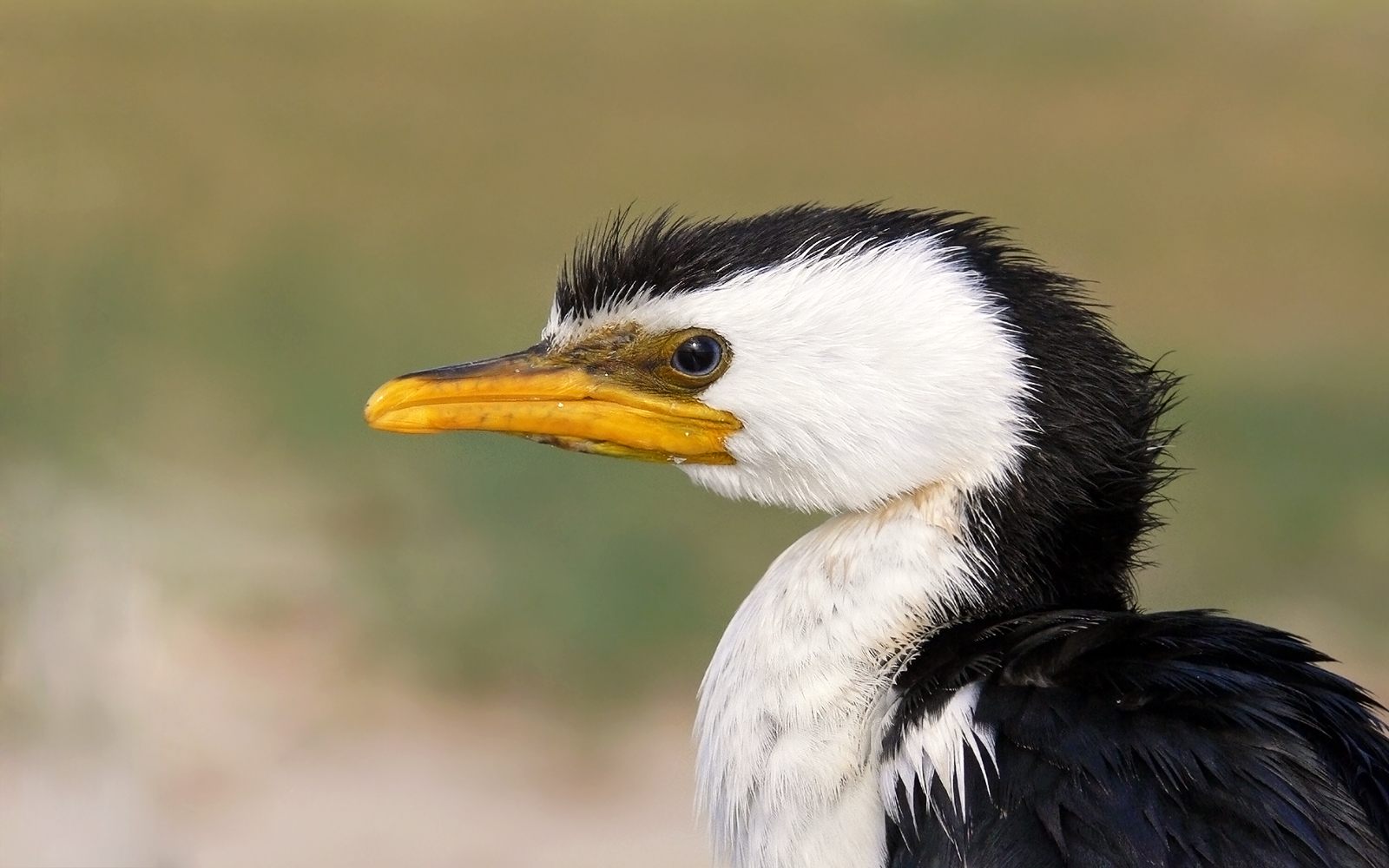
Top: Masked Booby. (Photo: By Duncan Wright) Above: Little Pied Cormorant (Photo: By Benjamint444, CC BY-SA 3.0)
Fishy-Smelling Seabirds
Seabirds move back and forth from the islands of New Caledonia to New Zealand and Australia and back, sometimes, but that doesn’t disqualify them from consideration in our Best Birds Ranking. New Caledonia is often home to the Little Pied Cormorant, an adorable penguin-colored diving bird which, like other cormorants, is often found spreading its wings like Batman to dry them. The Masked Booby, a spectacular diving bird, is the largest species of booby and known to breed on a few of New Caledonia’s islands. And the Sacred Kingfisher, which breeds in Australia but lives the rest of the year on islands like those in New Caledonia, was ascribed by the Maori to have many powers over the waves and oceans. It probably does, too.
New Caledonia is a spectacularly strange place; there is nowhere on Earth with more totally unique species given the small size of the islands. And there are almost certainly more to be discovered. If you know of a place with better birds, come at us: info@atlasobscura.com.

















Follow us on Twitter to get the latest on the world's hidden wonders.
Like us on Facebook to get the latest on the world's hidden wonders.
Follow us on Twitter Like us on Facebook